Have you ever been in the cooking aisle trying to decide between mace or nutmeg?
Or maybe watching a culinary show and wondering what the difference is between these two spices? You’re not alone.
Mace and Nutmeg are often confused with one another, as they have a similar history, smell, taste, color and even come from the same tree.
Though very closely related there are some key differences which will help set them apart in culinary applications.
In this blog post we aim to detail clearly all of the distinctions between Mace and Nutmeg so that you can confidently reach for either of these powerful flavors when ready.

What is Mace?
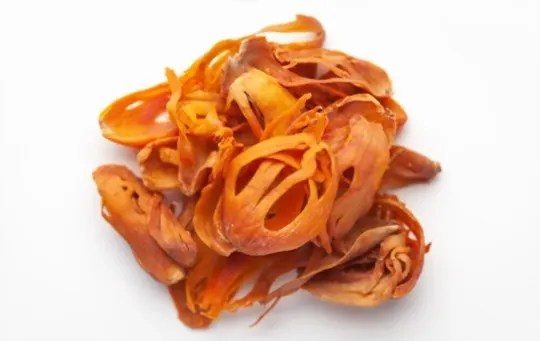
Mace is a spice that boasts an impressive history, unparalleled flavor, and a wide range of culinary applications.
Made from the dried, lacy covering of the nutmeg seed, mace has a warm, sweet, and slightly peppery flavor that adds depth and complexity to both sweet and savory dishes.
Its distinctive aroma is often described as a combination of cinnamon, clove, and nutmeg, making it a popular addition to everything from baked goods and desserts to meat rubs and stews.
With its unique flavor and impressive versatility, it’s no wonder mace remains a staple ingredient in many culinary traditions around the world.
So, whether you’re looking to add a touch of warmth and sweetness to a dessert or to spice up a savory dish, mace is sure to impress.
What is Nutmeg?
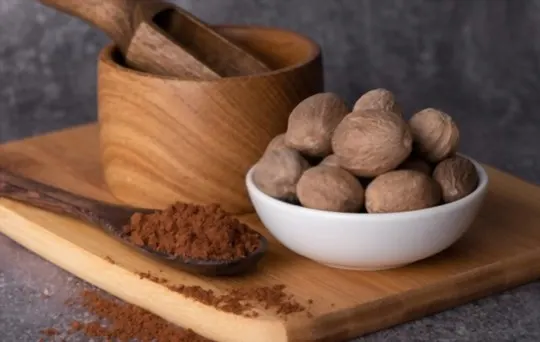
Nutmeg is a precious spice that’s been in use for centuries.
This hard, egg-shaped seed is a warm, sweet, and slightly bitter spice that comes from the evergreen Myristica fragrans tree, native to Indonesia.
Nutmeg is said to have originated in the Banda Islands, historically known as the Spice Islands of Indonesia.
The spice has found a place in cuisines worldwide and is used in various foods and drinks, including baked goods, eggnog, ice cream, and spice blends like garam masala.
Other than its delightful taste, Nutmeg also carries a myriad of health benefits, such as improving digestion, sleep, brain function, and even dental health.
In this article, we will delve deeper into the features of this special spice and examine its various applications.
Differences Between Mace and Nutmeg
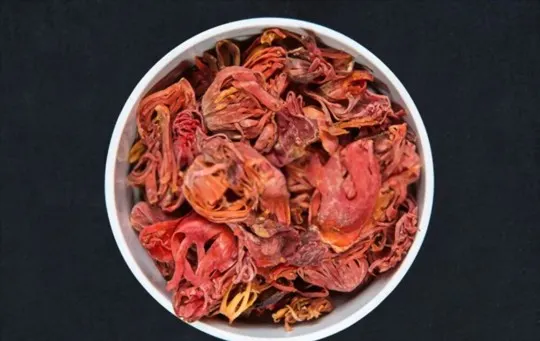
One may wonder about the differences between these two spices that might be easily confused for each other.
Nutmeg, obtained from the fruit of Myristica fragrans tree, is commonly used as a flavoring agent in baked goods, beverages and savory dishes.
Mace, on the other hand, is a spice derived from the lacy coating of nutmeg seed and has a more subtle aroma than its counterpart.
It is crucial to note that even though both mace and nutmeg come from the same plant species, they exhibit unique characteristics that make them suitable for different applications in culinary preparations.
Therefore, it would be best advised to choose one over the other according to their intended usage rather than interchangeably using them.
Appearance and Texture
The appearance and texture of mace and nutmeg are similar, yet there are considerable differences between them.
Mace has a slightly more coriaceous or brittle texture, which notes spicy tones in the flavor.
Nutmeg, on the other hand, is more substantial and smooth than its counterpart while having a more robust aroma with earthy undertones.
The outer surface of a nutmeg seed resembles a stone fruit that is light brown in color, whereas mace comes from the aril of the nutmeg and is thin and red-brown in color.
Consistency-wise, mace is airy, while nutmeg appears more solid due to its thickness.
In comparison to mace’s red-brownish color with woody fragrance profile complemented by slightly pungent taste; nutmeg’s hue ranges from light yellow to dark brown with warm spicy notes that create a multi-layered pungency.
Mace has a specifically delicate appearance; hence it’s considered as an excellent option for seasoning poultry recipes and subtle dishes like cream sauces or custards.
On the other side, nutmeg may be applied generously when cooking hearty dishes like stews or baking fruit pies.
It’s worth mentioning that while both spices have similarities in terms of textures and flavor profiles, their unique properties contribute differently to culinary arts coupled with their distinct usages; therefore not necessarily interchangeable ingredients in recipes where specific aromas are needed.
Flavor and Aroma
The unique aroma and flavor profiles of mace and nutmeg make them popular ingredients in many culinary dishes worldwide.
These spices add a robust bouquet and umami depth to both sweet and savory foods.
Nutmeg carries a sweeter fragrance with an earthy undernote, making it suitable for desserts like pies, custards, and fruits.
On the other hand, Mace embodies a more intense spicy aroma with a hint of bitterness that lends itself more to hearty meats, stews, and broths.
When considering the critical differences between mace vs nutmeg in flavor profiles, nutmeg primarily offers sweet citrus notes coupled with a mild pepperiness that is not as prominent as mace’s spicy undertones.
While mace has a subtler flavor than nutmeg, its rich complexity comes from its aromatic oils emphasizing bitter elements like clove, cardamom, and cinnamon.
Furthermore, Mace is ideal for use in complex recipes or those leaning towards ethnic cuisines like curry blends or Cajun seasoning.
It’s essential to note that despite their distinctive flavors and aromas, these two spices share similar nutritional benefits such as anti-inflammatory properties; they contain small amounts of Vitamin A & C while also aiding digestion.
In summary of this chipper dialogue about “Flavor and Aroma,” we have learned that while both mace vs nutmeg offer distinct taste visuals suitable for different recipes’ demands.
Each spice presents different sensory experiences on the palette with overlapping benefits beyond just giving your dish a boost of flavors.
Usage in Cooking
The usage of both Mace and Nutmeg in cooking brings an unparalleled richness in flavor.
These spices are commonly used in baking, desserts, and sauces to add depth and warmth to the dish.
Choosing between the two can be a daunting task, but their unique properties set them apart.
Mace is the outer layer that covers the nutmeg seed, with a more delicate aroma and sweeter flavor profile compared to Nutmeg.
It is often used in light-colored dishes as it gives a subtle warm tone without overpowering the other flavors.
On the other hand, Nutmeg has a bold flavor profile and works best when used sparingly.
Its potency can enhance both sweet and savory dishes, making it a versatile spice for various cuisines worldwide.
It is important to note that both Mace and Nutmeg have different grinding methods – Mace requires gentle rubbing on a rough surface while Nutmeg needs more pressure for its hard outer shell.
Understanding these differences will help ensure their proper use in recipes and achieve optimal flavors.
Incorporating Mace or Nutmeg into your cooking elevates every dish’s taste by adding an element of warmth and complexity.
Whether you prefer the sweeter nuances of Mace or boldness of Nutmeg, experimenting with different amounts for each will help achieve your desired results.
Similarities Between Mace and Nutmeg
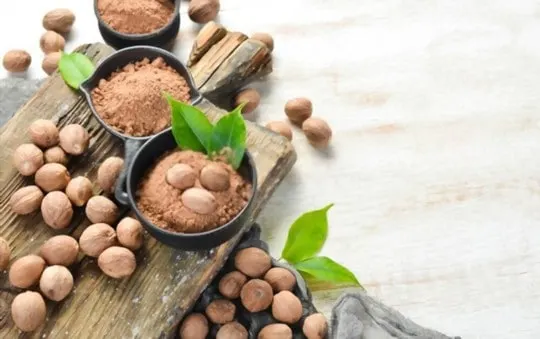
Both mace and nutmeg come from the same plant, Myristica fragrans.
They share several similarities in terms of their origin, appearance, and taste profile.
Mace comes from the outer layer of the nutmeg seed, while nutmeg is obtained by grinding its inner seed.
Both have a slightly sweet and warm flavor with a hint of spiciness.
Besides culinary use, they were also used in traditional medicine for treating various ailments such as digestive issues and anxiety.
In summary, mace and nutmeg are two spices that share many similarities due to their common origin from the nutmeg tree.
Moreover, these two spices have some differences in flavor intensity and usage preferences.
Mace has a milder flavor than nutmeg but also adds an extra depth to dishes due to its subtle aftertaste.
On the other hand, nutmeg has a bold flavor that can quickly overpower other ingredients; hence it needs to be used judiciously in recipes.
Moreover, nutmeg is commonly used in sweet dishes like pies and cakes whereas mace is preferred over savory dishes like stews and soups.
Overall, both spices have unique properties that make them ideal for specific culinary uses.
In addition to their culinary applications, both mace and nutmeg have components that offer medicinal effects through their anti-inflammatory properties.
Nutmeg possesses myristicin compound which could be useful as antibacterial or antioxidant agents.
On the other hand, Mace contains eugenol which acts as a natural pain relief agent.
Thus both spices are beneficial for health when consumed in moderate quantities along with a balanced diet.
Health Benefits of Mace and Nutmeg
Mace and Nutmeg offer unique health benefits that are important to consider when choosing between the two spices.
Explore the medicinal properties of these spices, as they can be used for anti-inflammatory agents, digestive issues, and respiratory problems.
- Anti-inflammatory agents – Both Nutmeg and Mace contain essential oils that exhibit anti-inflammatory properties. They help reduce swelling, soothe sore muscles, and alleviate chronic pain conditions such as arthritis.
- Digestive Benefits – Mace contains compounds that facilitate digestion by aiding the production of digestive juices. Nutmeg is known to help relieve stomach upsets like diarrhea or gas pain. In moderation, they both are helpful in improving digestive health.
- Respiratory Help – The essential oils within Mace and Nutmeg can act effectively against ailments involving the respiratory system such as bronchitis and coughs.
While both mace and nutmeg have overlapping properties, their differences should also be highlighted.
Mace has a slightly sweeter taste than nutmeg but nutmeg has higher levels of myristicin which boasts potent antibacterial abilities.
It is very crucial to determine which spice works best for your individual needs before incorporating it into your daily diet plan.
Where to Buy Mace and Nutmeg and How to Store Them?
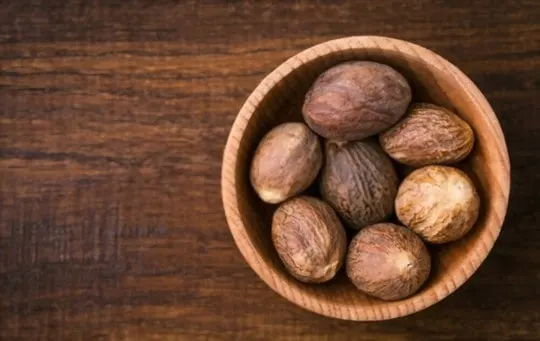
Mace and Nutmeg are both culinary spices widely used in many kitchens.
You might wonder where to find them and how to keep them fresh.
Let’s explore the options.
- You can buy mace and nutmeg from supermarkets, specialty food stores or online food stores.
- If you want the freshest spices, visit a local spice shop or buy whole nutmegs instead of pre-ground ones.
- To keep your spices fresh, store the whole nutmegs or ground powders in air-tight containers away from light and heat.
- If stored properly, whole nutmegs can last for up to two years, while ground mace should be used within six months.
It is worth noting that grated nutmeg is more pungent than pre-ground powder, making it a popular choice for baking or adding flavor to savory dishes like stews.
Remember that mace is the outer coating of the nutmeg seed and has a sweeter taste with hints of cinnamon and cardamom.
Thus, it depends on your preference when choosing which spice to use.
So there you have it – now you know where to purchase mace and nutmeg as well as how to store them properly.
It’s an investment worth taking for any aspiring chef.
Conclusion
Comparing the two spices Mace and Nutmeg, it can be deduced that both have unique qualities that make them stand out from one another.
While Mace is derived from the outer coating of a nutmeg seed, Nutmeg itself comes from the seed’s inner part.
In terms of flavor, Nutmeg is known to have a sweet and earthy taste, while Mace offers a more pungent flavor profile.
When it comes to health benefits, both spices offer antioxidant and anti-inflammatory properties.
However, research shows that mace contains higher levels of certain essential oils compared to nutmeg.
This makes mace a good option for individuals looking to add spice with additional nutritional value to their meals.
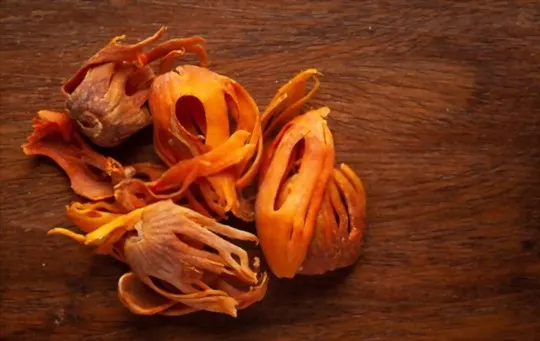
Mace vs Nutmeg: Which is a Better Option?
Ingredients
- Mace
- Nutmeg
Instructions
- Choose between two items based on your preference and availability.
- Follow the cooking directions for your chosen option, using the appropriate ratio of ingredients.
- Prepare it according to your desired recipes.
- Incorporate them into your dish, adjusting the amount to suit your taste.
- Enjoy the unique taste experience and experiment with different dishes to explore their versatility.

Andrew Gray is a seasoned food writer and blogger with a wealth of experience in the restaurant and catering industries. With a passion for all things delicious, Andrew has honed his culinary expertise through his work as a personal chef and caterer.
His love for food led him to venture into food writing, where he has contributed to various online publications, sharing his knowledge and insights on the culinary world. As the proud owner of AmericasRestaurant.com, Andrew covers a wide range of topics, including recipes, restaurant reviews, product recommendations, and culinary tips.
Through his website, he aims to inspire and educate fellow food enthusiasts, offering a comprehensive resource for all things food-related.
